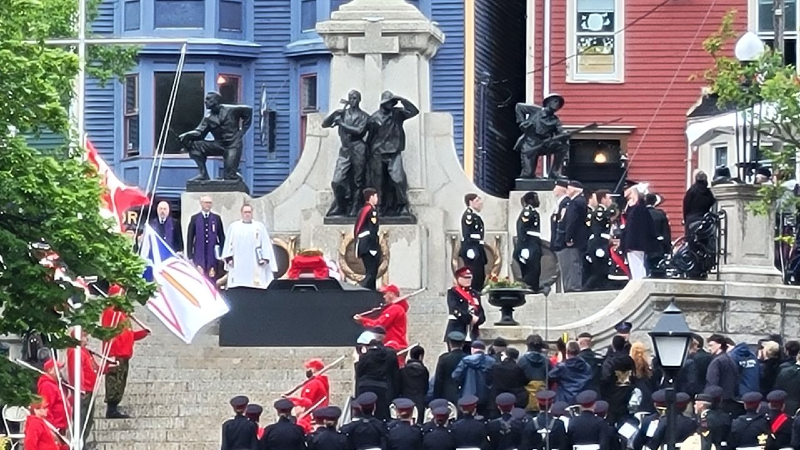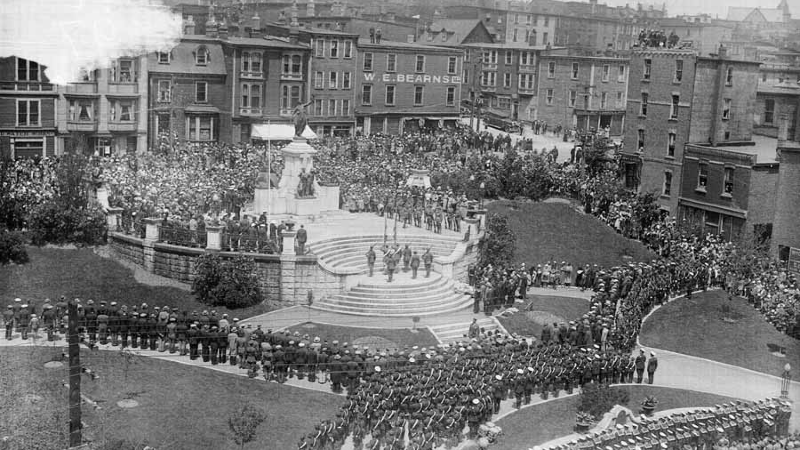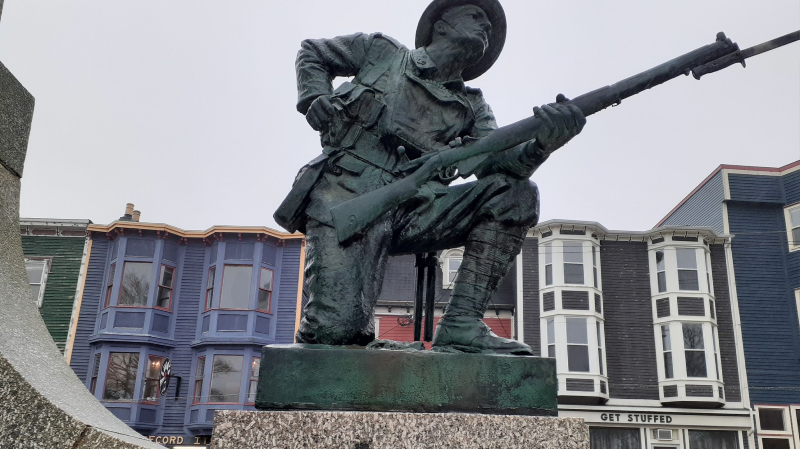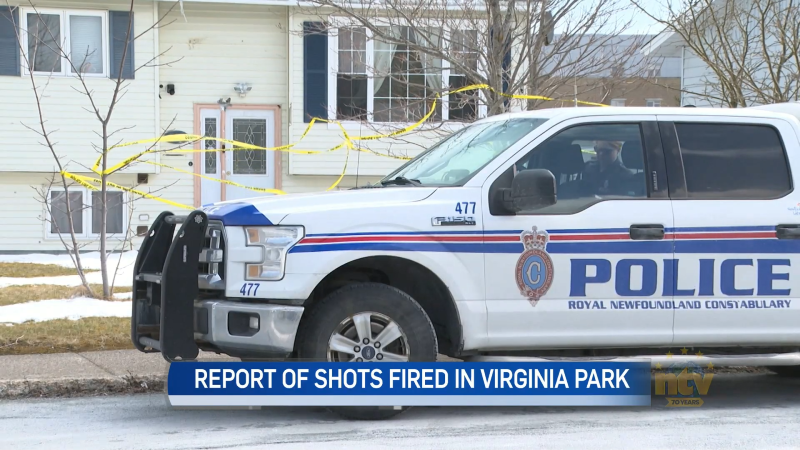
The Newfoundland National War Memorial was officially unveiled on July 1, 1924, by Field Marshall Douglas Haig, former Commander-in-Chief of the British forces during World War 1. The First World War ended with the signing of the Armistice on Nov. 11, 1918. As the Armistice neared, the people of Newfoundland and Labrador and their returned veterans wished to properly memorialize the fallen, so an intense community effort of commemoration was undertaken.
Work on the monument started in 1918 when the Governor of Newfoundland, Sir Charles Alexander Harris formed a Commemoration Committee under the Patriotic Association of Newfoundland. The next six years were fraught with indecision, challenges, disappointments, and delays. But in 1921, under the new leadership of Lt. Col. Thomas Nangle, and with the strong support of the Great War Veterans’ Association of Newfoundland, and the National War Memorial Committee, the Memorial was completed.

The Newfoundland National War Memorial was designated a National Historic Site in 2019, for its artistic significance and the fact that the memorial was inspired by John McCrae’s famous poem, In Flanders Fields.
Today, the Newfoundland National War Memorial represents the collective sacrifice and service of all Newfoundlanders and Labradorians who have served in all branches of service, during wars, conflicts, engagements, and peacekeeping efforts.
The monument is built of marble, with bronze statuary and iron fencing, and was the work of world-renowned British artists, Gilbert Bayes and Ferdinand Victor Blundstone.

Bronze plaques representing each of the following adorn the Memorial:
- The War of 1812-15
- The First World War
- The Second World War
- The Korean War
- The Afghanistan War
It is the province’s largest and most substantial work of public art, combining allegorical and realistic figures to portray Newfoundland’s “First World War effort”. It overlooks St. John’s harbour, the departure point for many of those who served and died, and the location to which many veterans, including those physically and mentally scarred, returned.

Today, on Memorial Day, the province will proudly gather to mark the 100th anniversary of the unveiling and dedication of the Newfoundland National War Memorial. The remains will be entombed on the plateau of the Newfoundland National War Memorial, to represent all those Newfoundlanders and Labradorians who lost their lives in conflict, especially those with no known graves.
.png)



.png)



.png)

